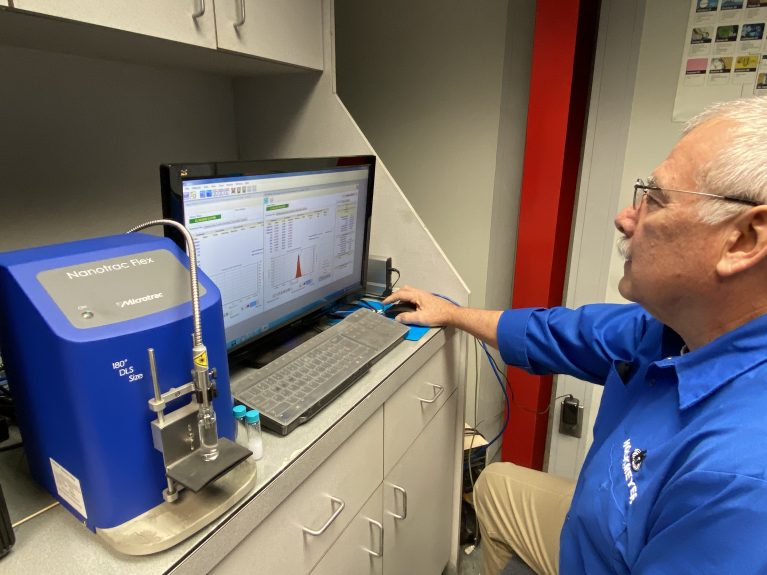
Industry Information
Comparing Basket Mills to Other Milling Technologies: Pros and Cons
Milling, mixing, dispersion, and particle size reduction technologies play a vital role in manufacturing and product development across numerous diverse industries, including food, cosmetics, pharmaceuticals, paints, coatings, specialty chemicals, and agrochemicals. Milling equipment has existed in various forms for thousands of years; however, modern technology has significantly advanced the field.
With numerous types of industrial milling equipment available on the market, how can manufacturers select the most suitable solution for their processes? Choosing the right technology involves a careful balance of factors, including raw materials, incoming and target particle size, particle size distribution, and the processes required to achieve the desired characteristics in the final product.
Basket mills, also known as immersion mills, were invented by the Hockmeyer team in the 1990s and have become one of the most commonly used wet grinding options.
In this post, we will compare basket mills to various other established dry and wet milling methods and emerging technologies. This comparison will help you choose the optimal solution for your manufacturing needs.
What Are Basket Mills and What Role Do They Play in Particle Size Reduction?
Basket mills are used to break down solid particles and disperse them evenly through a mixture, with minimal material loss and consistent particle size.
A basket mill consists of a milling chamber (the basket) with pegs, screens, and grinding media such as balls or beads. The machine agitates the raw materials and grinding media, with the particles colliding with the pegs and media before passing through the screens, creating efficient and uniform particle size reduction.
Basket mills are now considered among the most effective and efficient methods for reducing particle size through wet milling. They are ideal for reducing particles to micron and even nano size, and evenly distributed particles, and can process a wide range of materials. Additionally, their ergonomic design streamlines production processes and facilitates easy cleaning.
Hockmeyer pioneered this technology, calling it the “immersion mill.” Other companies use the term “basket mill” to differentiate their products from ours, but the core principle is similar.
Basket mills are widely utilized in various industries to process products such as paints, coatings, inks, pharmaceuticals, agrochemicals, renewable energy conductive slurries, and cosmetics.
Industrial Milling Equipment: Dry and Wet Milling Technologies
Overview
In this section, we will look at various types of milling and explore the pros and cons of each.
A. Ball Mills
A ball mill consists of a rotating drum filled with tumbling grinding media. The grinding balls are made of metal, ceramic, or occasionally other materials. As the drum rotates, the grinding media and material collide, breaking down the particle agglomerates.
Ball mills are an effective way of grinding hard solids. They are also an acceptable solution for fine grinding, such as turning large particles into fine powders. However, ball mills require long cycle times and they can be energy intensive, making them an inefficient technology compared to more modern manufacturing processes.
B. Hammer Mills
A hammer mill utilizes repeated, high-speed impact to grind material and reduce particle size. Within the grinding chamber, hammers attached to a rotor repeatedly strike the material to break and crush it until the desired particle size reduction is achieved.
Hammer mills are a cost-effective solution for coarse reduction. They are often used to mill grains for animal feed, shred scrap metal or other materials for recycling, and shred green waste for composting. However, hammer mills are a poor choice for fine grinding due to their relative lack of control compared to other types of milling equipment. They also generate significant heat while in use.
C. Jet Mills
Jet mills utilize fluid energy, using high-velocity jets of gas or compressed air to break up particles. They are well-suited for creating very fine particles within a precise size range. For this reason, they are often used for micronization, or particle size reduction within the 1-10 micron range. In addition, they do not introduce any contamination, making them an ideal choice for situations in which a very high purity of output is required. However, they give a lower throughput than more traditional grinding equipment and come with a high energy cost.
D. Roller Mills
Roller mills use horizontal cylindrical rollers rotating in opposite directions to compress and crush materials through shearing forces. Material is fed through the rollers and broken down into smaller pieces by these forces. The gaps between the rolls can be adjusted depending on material and incoming and outgoing particle sizes.
These are often used for the production of printing inks, wire cover, plastics, and cosmetics and are effective for a wide range of materials’ viscosities. However, low throughput, heat buildup, uneven particle size distribution, safety concerns, and the need for highly skilled operators have reduced their use and popularity.
Emerging Technologies in Dispersion, Milling, and Fine Grinding
Modern technologies are revolutionizing manufacturing, and several exciting new solutions are emerging in the particle size reduction space. In this section, we will look at two milling methods and explore their potential role in the milling process in the future.
A. Cryogenic Milling
Cryogenic milling, also known as cryomilling or freezer milling, involves using extremely low temperatures to grind particles. It uses dry ice, liquid carbon dioxide, or liquid nitrogen to grind materials that are difficult to mill at higher temperatures due to soft, elastic, rubbery, or temperature-sensitive properties. Extreme cooling makes the material brittle, allowing for it to be ground more effectively.
Cryomilling prevents material from melting and allows brittle fracturing of materials that would otherwise be difficult to grind. However, it is a niche technology; specialized equipment is quite costly compared to other technologies, and the materials it is suitable for are limited. This means that, in practice, it has found relatively little use.
B. Ultrasonic Milling
The ultrasonic milling process achieves nanoscale particle reduction via cavitation, or changes of pressure that cause the rapid formation and collapse of vapor bubbles in a liquid. It uses high-frequency sound waves, or ultrasonic vibrations, to grind particles. It finds use for grinding hard, brittle materials.
Ultrasonic methods offer high-precision solutions for dispersions and are particularly useful for materials such as ceramics, glass, and certain metal alloys. However, they generate significant heat, and are limited in their scalability and, due to their specialized use cases, are unlikely to find broader applications.
Comparison Matrix: Basket Mills vs. Other Solutions
| Criteria | Basket Mills | Ball Mills | Hammer Mills | Jet Mills | Cryogenic Milling | Ultrasonic Milling |
| Particle Size Control | Fine to sub-micron | Fine, but slow | Coarse to mid-range | Very fine (micron/sub) | Fine to ultra-fine (nano) | Sub-micron
(nano) |
| Product Compatibility | Broad (liquids, slurries) | Hard, brittle solids | Dry, granular materials | Heat-sensitive powders | Rubber, plastics, organics | Dispersions, nano-formulations |
| Energy Consumption | Moderate | High | Low to moderate | High | High | Moderate to high |
| Batch/Continuous | Batch | Batch | Batch | Continuous | Batch | Batch |
| Maintenance & Cleaning | Easy (single vessel) | Time-consuming | Simple | Complex (precision nozzles) | Difficult (cold systems) | Moderate (precision parts) |
| Capital Investment | Moderate | Moderate | Low | High | Very high | High |
| Throughput | Moderate | Low to moderate | High | Low to moderate | Low | Low |
When to Use Basket Mills
Various factors will impact your choice of equipment for any manufacturing process. When it comes to particle size reduction, incoming and target particle sizes and the type of material will play an important role in determining the best machine for the job.
Basket mills offer broad versatility and are capable of handling many different products. They excel at all viscosity ranges and offer the advantages of often consolidating processing steps, cutting down overall processing times to enhance efficiency and save money.
The recirculation of the slurry and the intense grinding result in uniform particle size distributions regardless of the target particle size. At the same time, the ease of operation and cleaning make them ideal for fast-paced operations.
Hockmeyer: Wet Grinding Solutions for Manufacturers Everywhere
Basket mills offer a flexible, efficient wet milling choice, and the Hockmeyer immersion mills represent the absolute best in their class. Our clients find that our basket mills speed up processing times, save them money, enhance operational efficiencies, and increase their bottom lines.
If you are unsure of the best type of milling equipment for your needs, an evaluation of your specific materials and desired characteristics can help. Contact our team to discuss your options and start finding tailored solutions that work for you.

